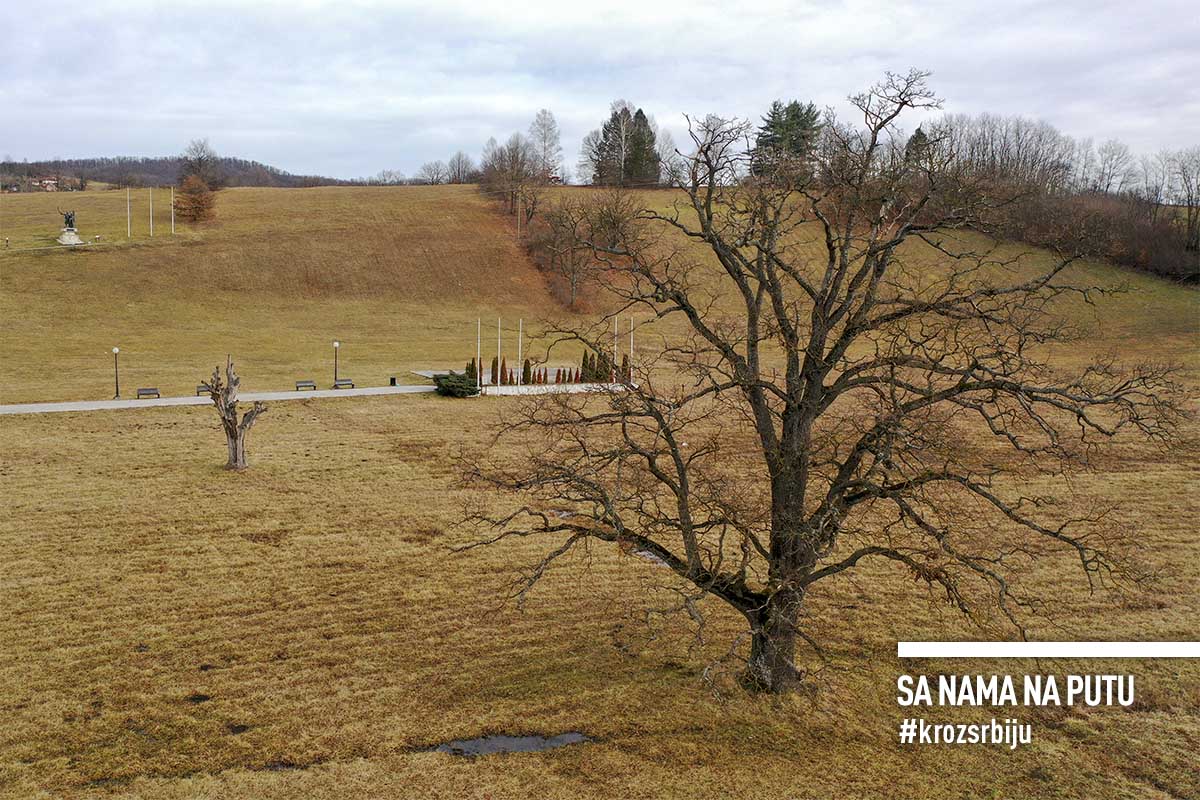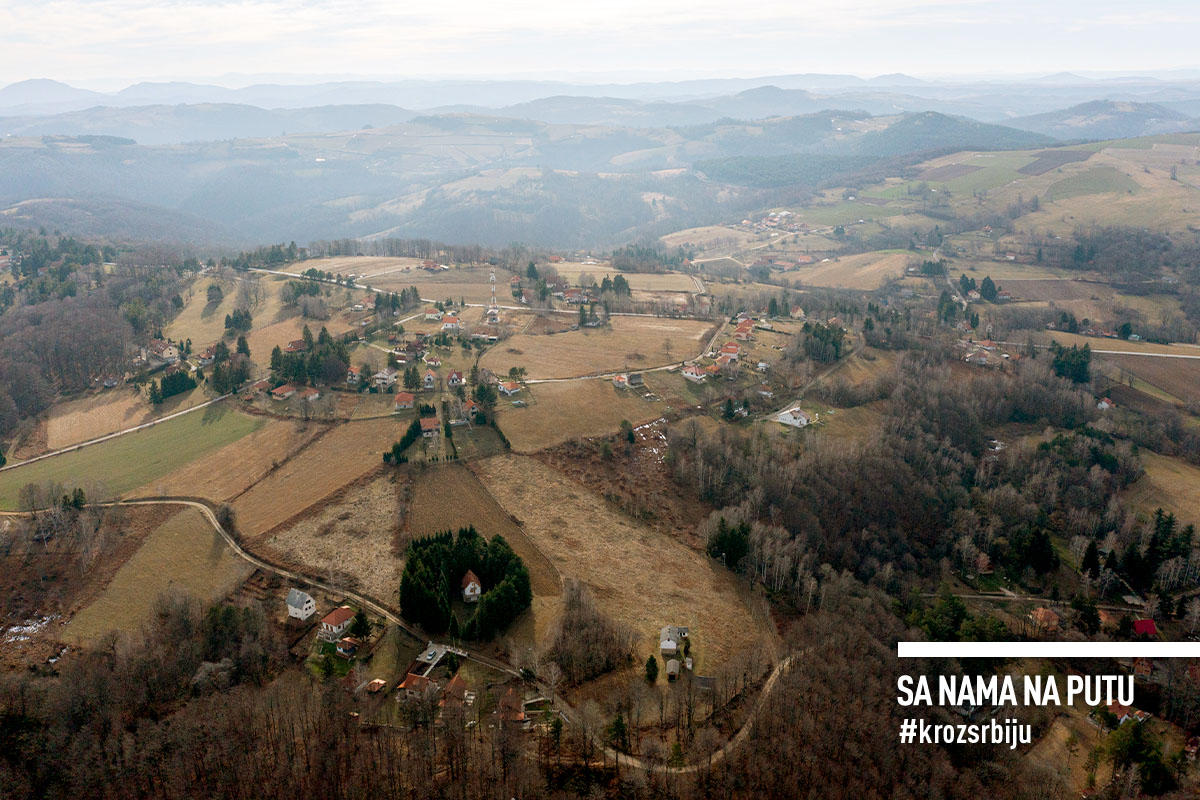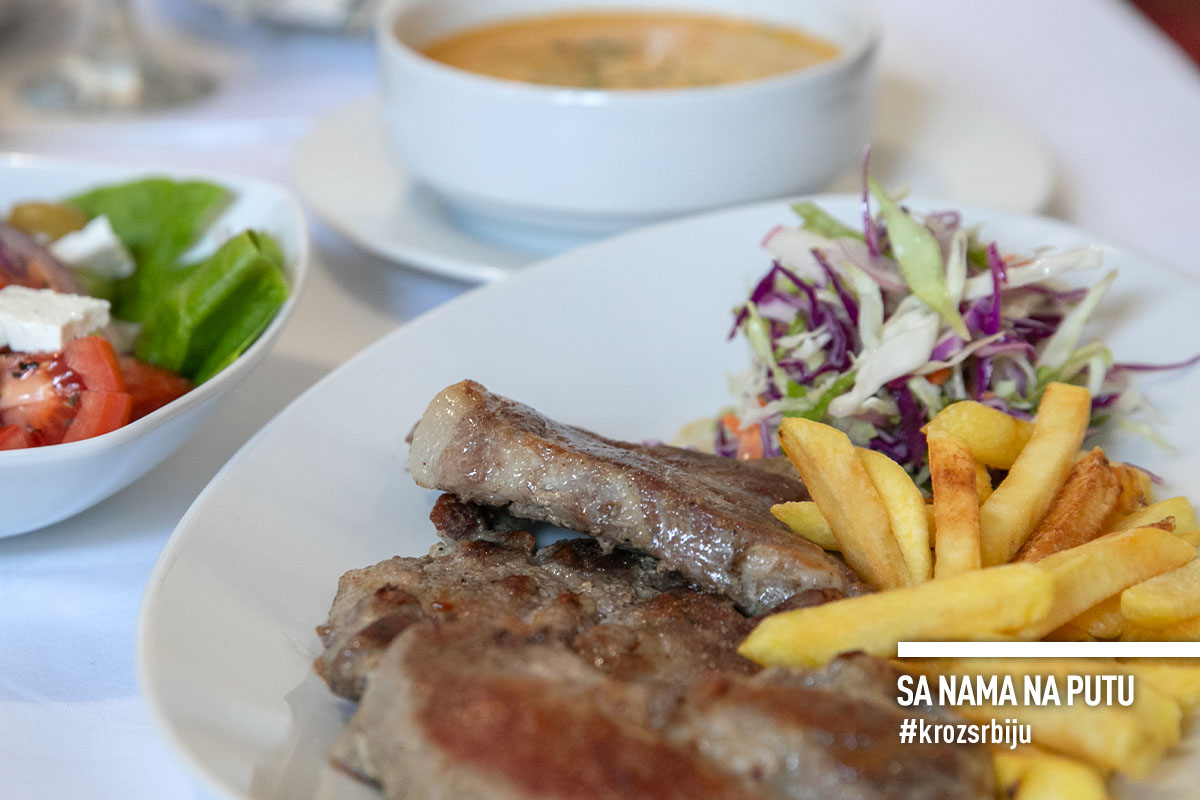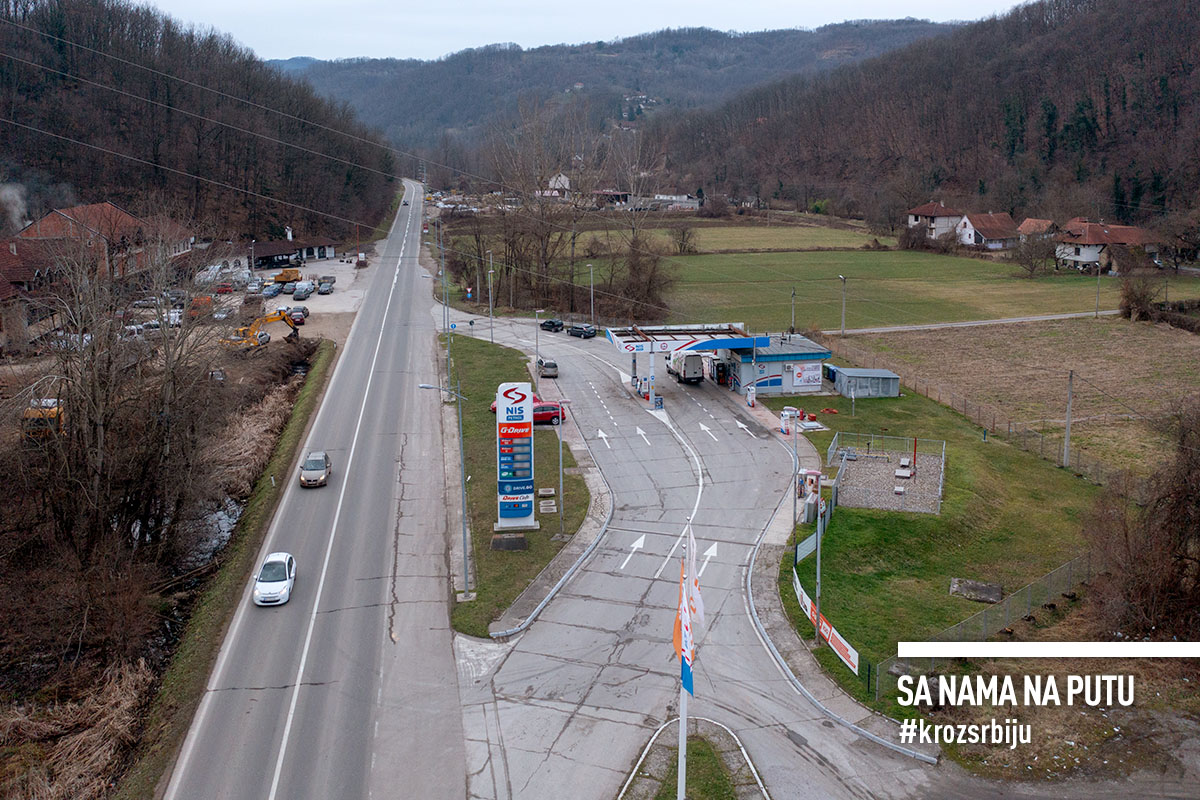We remember our glorious ancestors and their long-lasting, persistent, and heroic fight for liberation from the Ottomans. This year marks 220 years since the beginning of the First Serbian Uprising and almost 190 years since the adoption of the Sretenje Constitution. We are off to the slopes of the Dičina and Klatičevska River, to the homeland of staunch rebels and notable oak trees.
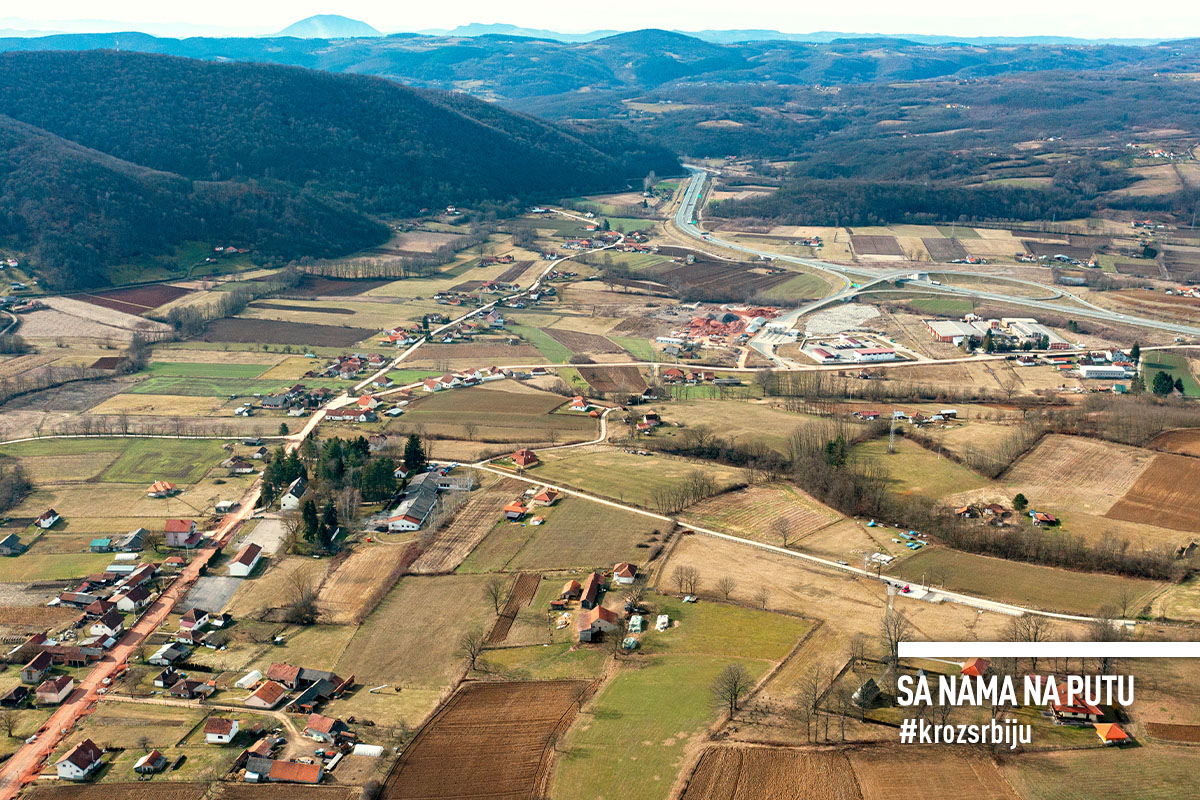
BECAUSE THE WOODEN TAKOVO CHURCH IS THE CHURCH OF REBELS
“Let all the burden fall on our soul, our shoulders, and our honour…”, answered the crowd in unison at the people’s assembly, after Miloš Obrenović announced the beginning of a new rebellion, the Second Serbian Uprising, on the Palm Sunday in 1815. On the hill in front of the wooden church, after the morning liturgy. The attendees then took communion, swore allegiance to each other and headed to the centuries-old oak trees in the nearby valley, where a large group of rebels ready for battle was waiting for them.
The church dedicated to St. George was built in 1795 on the site of a building built around seventy years before it. With a foundation of hewn stone, made of oak planks. A typical example of a wooden cabin built by the builders from Osat in Bosnia. The wooden door is decorated with rich carving. It is rather low. So that one needs to bend when entering and so that Ottomans wouldn’t enter it on horseback. The iconostasis, whose parts were donated by Jovan, Miloš’s brother, is still preserved. It was renovated in 1935. In the churchyard, there is still a stone from which Miloš gave his rebellious speech, and an old village cemetery with tombstones, some of which are decorated with unusual patterns and crosses, and some have a sabre or a rifle carved on them. Not far from the wooden church is the Church of St. Sava in Savinac, the first endowment of Miloš Obrenović in liberated Serbia.
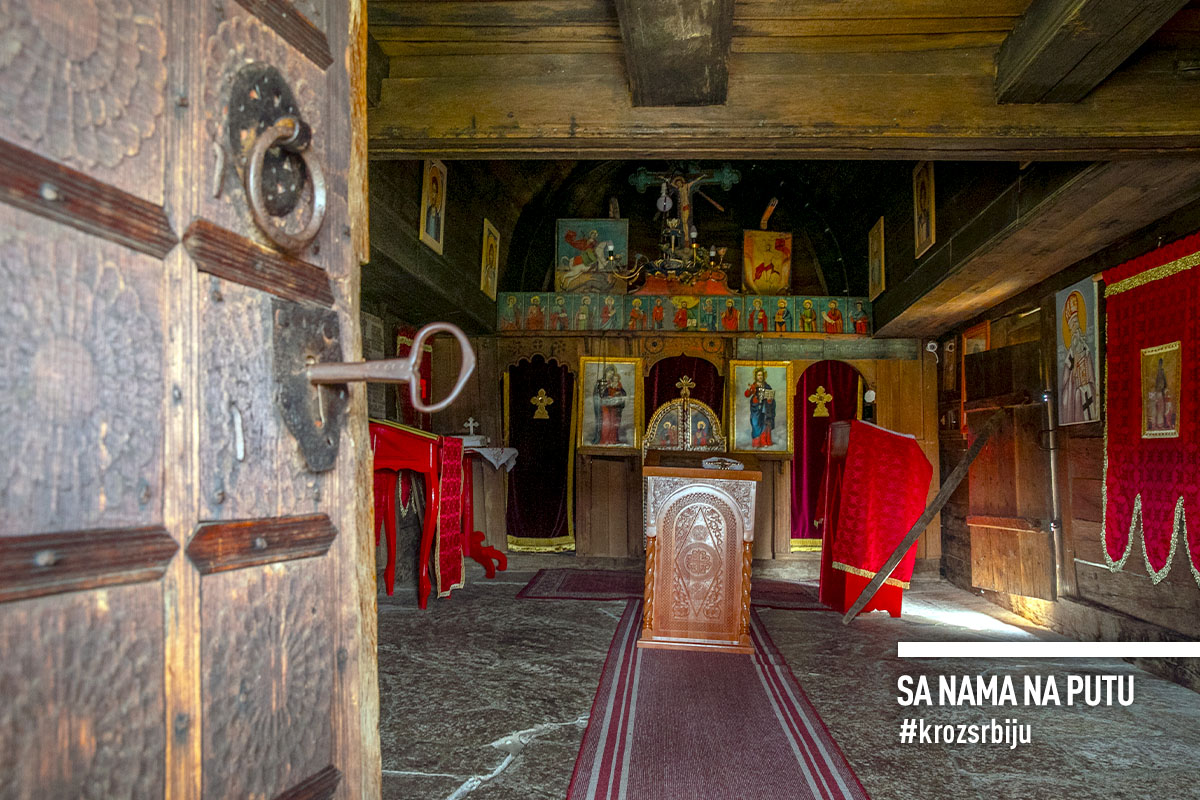
BECAUSE THE MUSEUM OF THE SECOND SERBIAN UPRISING IS A REPRESENTATION OF THE SERBIAN REVOLUTION
It was opened in 1994 at the former elementary school in Takovo, the endowment of King Aleksandar Obrenović. It gives an overview of the fight against the Ottomans, from the First Serbian Uprising in 1804 to the end of the first Miloš’s rule in 1839, the so-called Serbian Revolution. The most important exhibits are the remains of the famous old Takovo oak tree, and Paja Jovanović’s masterpiece “The Takovo Uprising”, from 1895. It is the first version of the painting and is larger than the second, which is the property of the National Museum in Belgrade. Other important items include Miloš’s ceremonial suit, albeit a replica, because the original is in Belgrade, and the blanket for his horse. Many other works of art are also on display, including original and copies of documents, publications and correspondence, objects for everyday use, the earliest modern decorations, state symbols, and weapons. A walk around a small but beautifully designed exhibition gives a rather interesting overview of the rebellious Serbia.
A few kilometres away is the residence of Prince Miloš in Gornja Crnuća. Although it has a permanent exhibition setting, it is difficult to see it. Unfortunately, we did not succeed in it. The residence is located on a private property, surrounded by houses and outbuildings, and there is no permanent host. It was renovated about ten years ago and is of great cultural importance. The building is considered the first court of modern Serbia. It is the place of the session of the insurgent assembly, and the capital of the Principality until its relocation to Kragujevac in 1818. After the announcement of the popular rebellion in the wooden church, Miloš went to this residence, put on his most festive suit, unwrapped an insurgent flag and shouted in front of the gathered people: “Here I am, and here is the war with the Ottomans”!
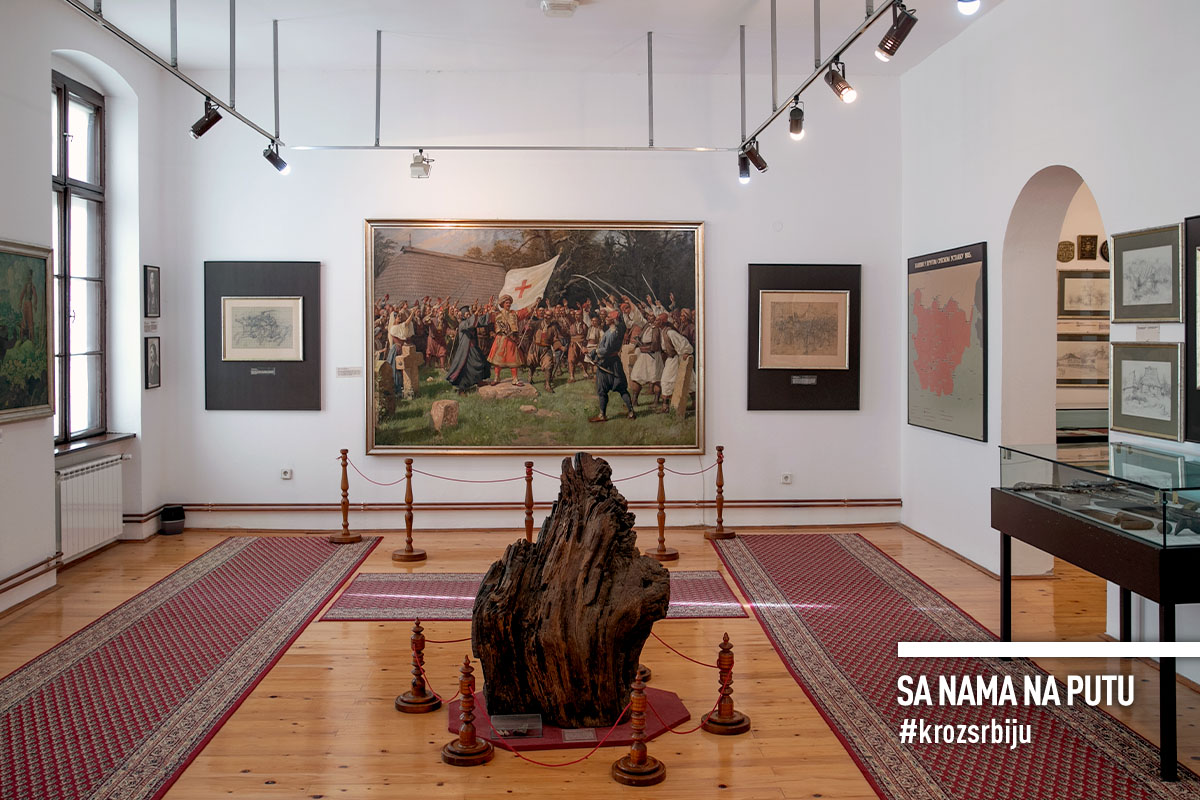
BECAUSE THE TAKOVO OAK TREE REPRESENTS THE FREEDOM OF SERBIA
A few kilometres from the Museum, there is a historically significant place, decorated in the memory of the Second Serbian Uprising, the liberation from the Ottomans, and the creation of the modern Serbian state. The area from the slope is dominated by the monumental bronze monument “The Takovo Uprising”, the work of Petar Ubavkić, which represents the moment of the declaration of the uprising. It overlooks a wide field of a few hectares, which is adorned with several monuments. A stone path leads to the obelisk “Under the Takovo Oak Tree”, which was built by the grateful people of the Rudnik area at the end of the 19th century. Made of marble, with carved insurgent and state insignia, it also includes the verses of Aleksa Nenadović: “This oak tree will dry up during time and the stone pillar will collapse, but Serbia will always stand straight and mention the name of Miloš with pride.” Behind it is a meadow on which the summer house of Aleksandar Obrenović should be rebuilt, once a three-story building with 36 rooms, with its exterior resembling the villas of the Austrian aristocracy and with its interior in the style of Šumadija region in Serbia. The castle of Takovo was destroyed in a fire in 1917 under unexplained circumstances. There is a sign of the place of the old pedunculate oak tree, under which the battle for freedom began. It was a real monstrosity. 23 meters high and with the trunk circumference of nine meters. However, over time, it began to deteriorate, so the people linked the fate of the oak tree to the fate of the Obrenović dynasty. Namely, the larger branch broke off in 1860, foreshadowing the death of Miloš, the smaller one eight years later when Mihailo was killed, and in 1901 the storm uprooted it, announcing the collapse of the Obrenović dynasty. However, during his life, Prince Mihailo renewed the sacred Serbian tree. The successor was planted in 1865. It was leafy until the 1990s, and now it is a dried-up natural sculpture. A century later, a sapling of the third Takovo oak tree was planted opposite it. In honour of the unforgettable words of Prince Mihailo that “as long as there a Serbian state and people exist, there shall be an oak tree growing in Takovo as a symbol of freedom and independence”.
